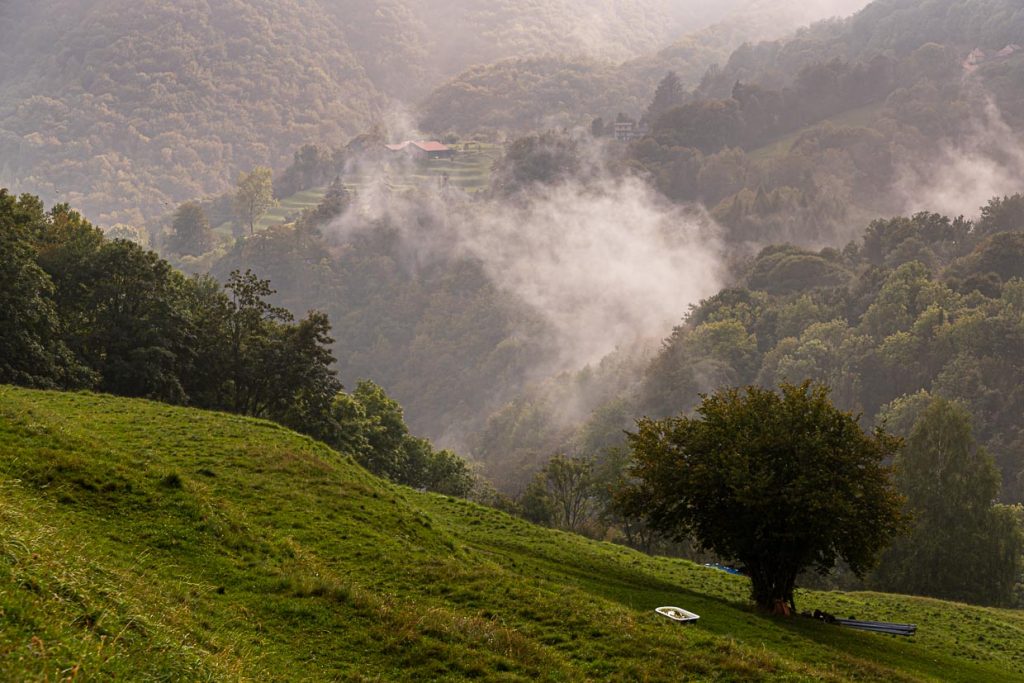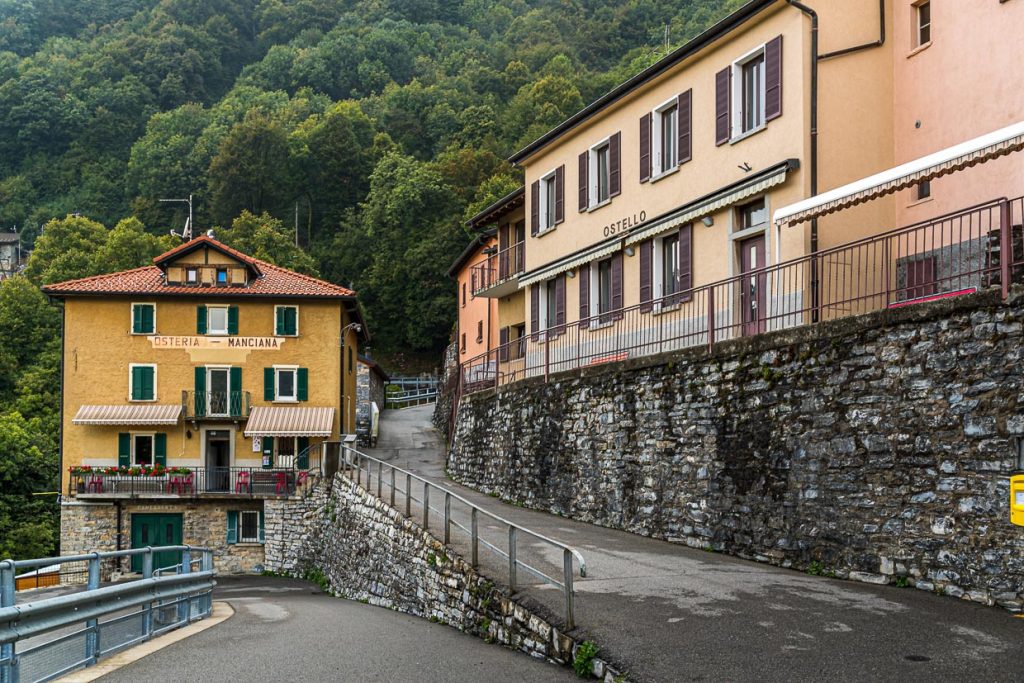The Valle di Muggio is the southernmost valley in Ticino. It stretches from the Chiasso region up to the foot of Monte Generoso. Over the centuries, people have created a colorful mosaic of habitats here. Chestnut woods alternate with dry meadows, pastures and orchards.

A Swiss cultural landscape like in a fairy tale
After short rain showers, small dots of clouds settle over the greenery. Vineyards and fields are interrupted by hedges and dry stone walls. The region is rich in plants and more than 100 butterfly species feel at home in the Valle di Muggio. Numerous thematic trails, along which the ancient cultural landscape can be discovered, crisscross the valley.

The spectrum of biodiversity here is broad. From the fire salamander rustling through the foliage to rare bird species such as the wryneck, many animal species can be observed here. A hike through this cultural landscape with its numerous traces of rural life also reveals the current traces of rural exodus. Abandoned farmsteads and empty houses. As is often the case in rural areas, young people move to the cities and the elderly stay behind.

Scudellate – a village becomes a hotel
The village of Scudellate is the highest in the Muggio Valley. Scudellate still has 20 inhabitants, an osteria, with an ossobuco praised beyond the valley, a bird tower and a post bus that stops by several times a day. All around there is a lot of nature, fantastic views into the valley and empty houses. The Osteria Manciana is open all year round, which is worth a lot. Guerino Pifaretti is the owner and chef, his wife does the service. His grandfather built the osteria, in the parlor hangs an old photo. Guerino as a little boy on his grandfather’s lap.

Guerino’s children went out into the world long ago. It is the typical fate of small villages. That of Scudellate also seemed sealed. But then an initiative starts, in which Guerinos’s son also sees a perspective. He is one of five people who have the village at heart and who are committed with deeds and money. An Albergo Diffuso is to be built in Scudellate. This expression sounds evocative and enticing at the same time. Albergo Diffuso – the whole village is to become a hotel and the Osteria Manciana its lobby.

Carlo Crivelli, director of the Enoteca Borgovecchio in Balerna, has spent a lot of time in Scudellate. His family owns a vacation home there. For him, the revival of the village is a real project of the heart. He sees great potential. The location of the village is fantastic. Road cyclists love the route, which is also part of the Swiss Trophy in the lower section. Above, many hiking trails lead through the cultural landscape to the summit of Monte Generoso. The old schoolhouse, where Guerino Piffaretti still went to school, was a youth hostel for many years. Also in the new concept of an Albergo Diffuso, the former school building will remain an ostel. An inexpensive and simple accommodation for everyone. Further apartments are to be built throughout the village.

Albergo Diffuso on Monte Generoso
Monte Generoso, at 1,701 meters, occupies an imposing position above Lake Lugano. It is a last post of the Ticino Alps before the Po Valley. Most tourists make their way to the summit by the old rack railroad, coming from Capolago. At 1,600 meters is the end of the line. The remaining meters in altitude must be hiked. Alternatively, the summit can also be reached from Scudellate. On the way to the summit, less than a ten-minute walk from the village, hidden among the trees, lies another attraction of the region. The Roccolo is a bird tower that tells a lot about life in the Valle di Muggio.

The bird catchers in Valle di Muggio
Probably the most famous bird catcher in the world is called Papageno. In Mozart’s Magic Flute of 1791, the bird catcher plays the leading role alongside Prince Tamino and probably corresponds to the spirit of the times. For bird catchers delivered the songbirds in those days. They intercepted the birds on their flight routes from the north to the south and offered them for sale in the surrounding towns. Songbirds served as a pastime for the upper class society. But the birds also landed on the dinner plates of the fine houses. The profession of bird catcher was born out of need and poverty. In the Valle di Muggio, especially during the long and cold winters, there was not much to eat. Chestnuts brought the people through the winter. From the sale of the birds they could buy necessary things.

The Roccolo Meri in Scudellate
In Scudellate, a signpost points to the Roccolo Meri. It is located a little above the village and consists of three floors. Each floor of the bird tower has an ingenious function. By the song of birds already held captive, migratory birds were lured inside, then startled by the throw of a flying object that the animals mistook for a bird of prey, and when they tried to fly out of the tower they landed in a net. The perfidious system enabled high catch rates. In Switzerland, bird catching was banned in 1875. The story of the bird catchers is a very striking relic left by the people of the Valle di Muggio.

By the way, Scudellate is only a stone’s throw away from Italy. Today, a hiking trail leads across the border to the picturesque Erbonne. The Italian village is closely connected with Scudellate. But this is another story and tells of the coexistence of people in a time when border lines were not only on maps, but often also in people’s minds.
More stories from the Muggio Valley. Click here for the report on Zincarlin – a cheese speciality from the Valle di Muggio.

